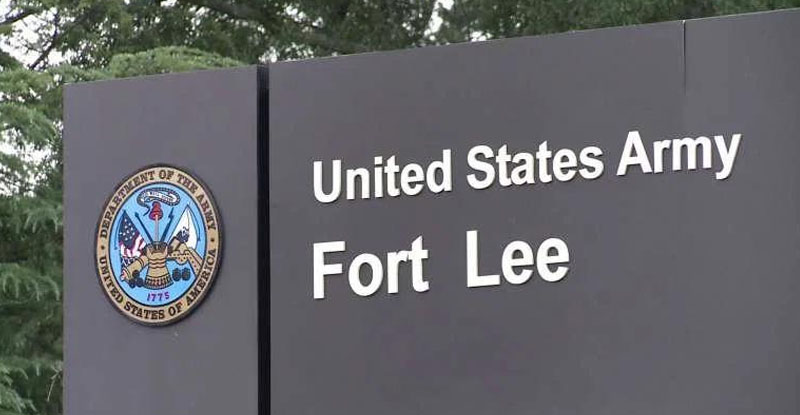By Forrest L. Marion, PhD, retired US Air Force officer and military historian
The congressionally mandated Naming Commission is much in the news. New names are coming to storied U.S. Army posts named for Confederates. Perhaps the first thing to note is the most obvious: this effort was unnecessary. Unlike during the Army’s massive increase of its installations in preparation for war especially in 1917 and the early 1940s, the U.S. military of the 2020s is not in search of names for new stateside bases (except perhaps the U.S. Space Force). Will this initiative increase the U.S. Army’s combat readiness?
The Commission chair’s introductory remarks in the final report deserve repeating: “We were reminded that courage has no boundaries by categories of race, color, [sex], religion, or creed. From privates to generals, we found hundreds of military members who exemplified the core values of the Army.” True enough. In fact, the biographical sketches of numerous valorous military members throughout Army history could have provided the core for a useful book.
Unfortunately, their stories appear to be employed not only for purposes of educating and inspiring, but also for providing the fodder for a politically motivated process. Moreover, those who refrain from jumping on the Commission’s bandwagon may find themselves criticized – albeit unjustly – for supposedly disparaging the record of those whose biographies are contained in the report.
One particularly sobering statement – repeated for each post being renamed – should not go unnoticed:
The Commission recognizes that Department of Defense assets commemorating the Confederacy or an individual who voluntarily served with the Confederacy will continue to be identified after the submission of the Commission plan. The Commission recommends the base rename, remove, or modify any such assets identified in the future [emphasis added].
Don’t miss this. The Commission considers the (politically charged) work it has begun to be ongoing; there’s no end in sight. Should that happen, the reality must be that divisiveness and hard feelings within the Army’s ranks – and reluctance within recruiting circles which has contributed to a near-crisis shortfall of new accessions – will continue to be stoked. . . . (read more at Real Clear Defense)
Additional
Naming Commission’s Final Reports
PART I: United States Army Bases
Submitted to Congress on August 8, 2022, this part of the Final Report provides the Commission’s naming recommendations for nine Army bases.
PART II: U.S. Military Academy and U.S. Naval Academy
Submitted to Congress on August 29, 2022, this part of the Final Report addresses assets on the U.S. Military Academy and the U.S. Naval Academy.
PART III: Remaining Department of Defense Assets
Submitted to Congress on September 19, 2022, this part of the Final Report addresses all other Department of Defense assets not covered in the first two parts.
DoD Begins Implementation of Naming Commission Recommendations (DOD Press Release, 5 JAN 23)
Report to Congress on U.S. Navy Ship Names (Congressional Research Service Report, 11 JAN 23)
Goodbye Fort Bragg, Hello Fort Liberty (Fox 8, 13 JAN 23)
A name has been finalized. The United States’ Department of Defense announced it will officially change North Carolina’s military base from Fort Bragg to Fort Liberty after concluding its Naming Commission Process. The services and DOD agencies are said to have until the end of the year to complete all processes. In May, the naming commission suggested the post be changed to Fort Liberty, marking the only post of 10 that needed new names to not be after a person. It was decided Fort Bragg would receive a new name after U.S. Congress passed the national defense authorization act. It required the renaming of all 10 U.S. Military installations named after confederate soldiers. . . . (read more)
Work begins to rename military ships, installations named for Confederates (Task & Purpose, 8 JAN 23)
On Thursday, Ryder did not specify a cost for the overall effort, but the Naming Commission’s final report put the number at approximately $62.5 million.
The biggest pieces in this effort are nine Army bases named for figures from the Confederacy. Those are forts Benning, Gordon, Bragg, Hood, Rucker, Polk, A.P. Hill, Pickett, and Lee, all of which are located in Southern states that were once part of the Confederacy. They will be given new names, recommended by the Naming Commission; Fort Bragg will become Fort Liberty, for instance.
The Department of Defense will also be addressing a pair of U.S. Navy ships. The Naming Commission did not offer recommendations for those. The USS Chancellorsville is named for a battle the Confederacy won and the oceanographic survey ship USNS Maury is named for Matthew Fontaine Maury, who resigned from the Navy to join the Confederacy. It’s not clear how the Pentagon will handle those names.
The Department of Defense will also be renaming or changing roads, buildings, signs, memorials and other smaller items honoring the Confederacy. This is the vast majority of the undertaking, with more than 1,000 items to be addressed, and is approximately two-thirds of the estimated cost. . . . (read more)
Pentagon begins work to strip DOD of Confederate-linked names and items, rename 9 Army posts (Stars & Stripe, 5 JAN 23)
. . . Mandated by Congress in 2021, the Naming Commission found more than 1,100 Defense Department assets across the U.S. military’s inventories that honored the Confederacy. It determined the Pentagon would have to spend some $62.5 million to remove and rename those assets. Ryder said he did not have a separate cost estimate from the Pentagon.
The items marked for change include hundreds of signs, roads, memorials and buildings on U.S. military posts in the United States, Germany and Japan. It includes items at the U.S. Naval Academy in Annapolis, Md., and the U.S. Military Academy at West Point, N.Y., including paintings and building that honor Confederate Gen. Robert E. Lee, an 1829 West Point graduate who also served as the institution’s superintendent before resigning his U.S. commission to helm the Confederate Army in the Civil War. It also recommended the removal of a prominent Confederate monument at Arlington National Cemetery in Virginia.
The commission recommended the Navy rename the USS Chancellorsville, a guided-missile cruiser named for a Civil War battle that the Confederates won, and the USNS Maury, an oceanographic survey ship named for a Confederate naval commander.
While the commission declined to recommend new names for those ships, it made recommendations for the Army installations that it determined should be renamed.
Commissioners recommended to rename Fort Bragg, N.C., to Fort Liberty; Fort Polk, La., to Fort Johnson; Fort Benning, Ga., to Fort Moore; Fort Gordon, Ga., to Fort Eisenhower; Fort A.P. Hill, Va., to Fort Walker; Fort Hood, Texas, to Fort Cavazos; Fort Pickett, Va., to Fort Barfoot; Fort Rucker, Ala., to Fort Novosel; and Fort Lee, Va., to Fort Gregg-Adams. The commission estimated those name changes would cost some $21 million, with Fort Bragg’s change costing the most at about $6.3 million.
Defense officials have suggested the processes to change base names could prove tedious because they will require changes to thousands of items from buildings and road signs to business cards, letterheads and brochures. Officials have also said they would need to work with local and state officials to change signs and other items outside of the military’s gates. . . . (read more)
West Point to remove Robert E. Lee portrait, bust (The Hill, 24 DEC 22)
West Point over its holiday break will remove a portrait of Robert E. Lee in Confederate uniform as well as a bust of the general from prominent spots on campus, carrying out directives that were included in a defense authorization bill for 2021.
Lt. Gen. Steven W. Gilland announced these steps and more in a letter to the West Point community posted on the military academy’s web site.
“During the holiday break, we will begin a multi-phased process, in accordance with Department of Defense (DoD) directives, to remove, rename or modify assets and real property at the United States Military Academy (USMA) and West Point installation that commemorate or memorialize the Confederacy or those who voluntarily served with the Confederacy,” Gilland wrote.
The changes come after demands to remove Confederate statues, busts and portraits gained steam following George Floyd’s killing by police in Minneapolis in the summer of 2020. . . . (read more)
~
“Every record has been destroyed or falsified, every book rewritten, every picture has been repainted, every statue and street building has been renamed, every date has been altered. And the process is continuing day by day and minute by minute.”
George Orwell “1984”








In addition to the extreme idiocy of removing and/or re-naming installations and memorials, the costs involved along with the disruption of far to much beyond just the military part is ludicrous and will engender a growing anomosity among not only both former and active duty military personnel and families, but a significantly large portion of the thinking general populous.